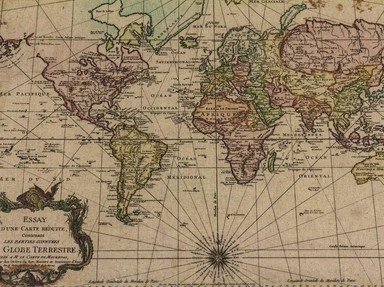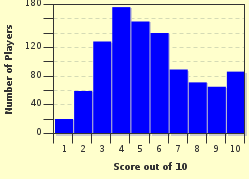Quiz Answer Key and Fun Facts
1. This state came into being in 1112 under Hermann. In 1806, it was given the status of Grand Duchy following the fall of the Holy Roman Empire. It ended its sovereignty by joining the German Empire in 1871, though officially it remained a separate state through 1945. What country, now combined with Württemberg and part of Germany, is this?
2. One of the ancient kingdoms of Ireland, this current province of Ireland comprises of 5 counties. From the 5th to 12th centuries, all of its leaders were members of the Uí Buiúin and Uí Fiachrach clans. In 1227, Henry III of England granted it to a Norman baron. It was finally divided into shires in 1576. What kingdom was this, now the western province of Ireland?
3. This African trading empire was ruled by the Sayf dynasty until it died out in 1846, when Umar I ibn Muhammad al-Amin took over. The vast majority of its history was discovered by Heinrich Barth in the "Diwan," which listed 69 rulers and many events over the centuries. What empire was this, which was conquered by Sudanese forces in 1893?
4. The golden age of this country spanned from its creation in 830 AD to 894. At its peak, it incorporated lands from what is today Poland all the way to Romania. It was resurrected in a much smaller form in 1029 as part of Bohemia, and joined the Czech Republic in 1993. What once-major medieval kingdom is this?
5. Existing from 1336-1646, this empire, which controlled virtually all of southern India, was named after its capital city, now located in the state of Karnataka. Its power decline came after defeat in the Battle of Talikota to allied Deccan sultanates in 1565. What empire was this, which gave birth to the Mysore Kingdom after its collapse?
6. Established around 1010 AD, the ruling line of this country named every male descendant Heinrich. It was split into the Elder, Middle, and Younger lines in 1564, though the Middle line ended in 1616. In 1815, both lines joined the German Confederation, and after World War I, it was incorporated into Thuringia. What state, which shares a name with a Swiss river, is this?
7. Ruled by the Arsacid dynasty, this precursor to Iran existed from 247 BC to 224 AD. The Parni tribe entered the region after Alexander the Great's death, and held control until they were overthrown by the Sasanians. At its height, this empire owned land from present-day Oman to Turkey, to Afghanistan in the east. What empire was this, which defeated the Roman Empire soundly in 53 BC?
8. This state emerged initially at the city Gao (in present-day Mali) around 1000 AD, and was eventually freed from the Mali Empire around 1340. By 1500, it encompassed land from the Atlantic Ocean to Niger, and as far north as Mauritania. Which empire was this, which was succeeded by the Dendi Kingdom?
9. This massive dynasty ruled from the Atlantic Ocean all the way to India, encompassing the Iberian and Arabian Peninsulas and all of northern Africa. The second of the 4 Islamic caliphates, it only existed from 661-750 AD, and was overthrown by the Abbasid Caliphate. What dynasty was this, which then created the Caliphate of Cordoba in 756 after its fall?
10. This monastic state originated in Palestine in 1190, but moved its center to eastern Europe in 1211. Slowly, it grew by absorbing Livonia, Pomerania, and Neumark at separate times. In 1525, it was dissolved with the coming of the Protestant Reformation (due to its Catholic roots) and became Prussia. What powerful medieval state was this?
Source: Author
illiniman14
This quiz was reviewed by FunTrivia editor
Exit10 before going online.
Any errors found in FunTrivia content are routinely corrected through our feedback system.

